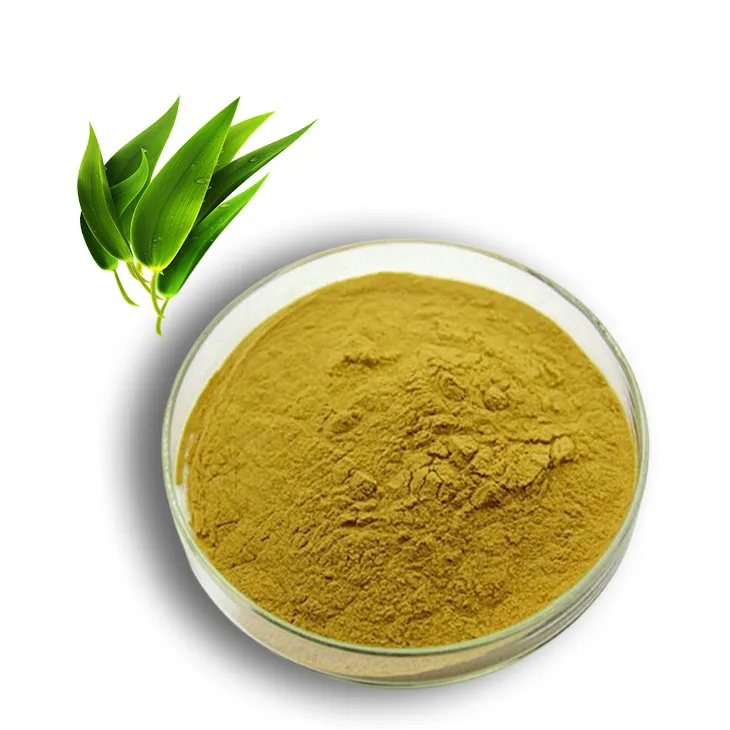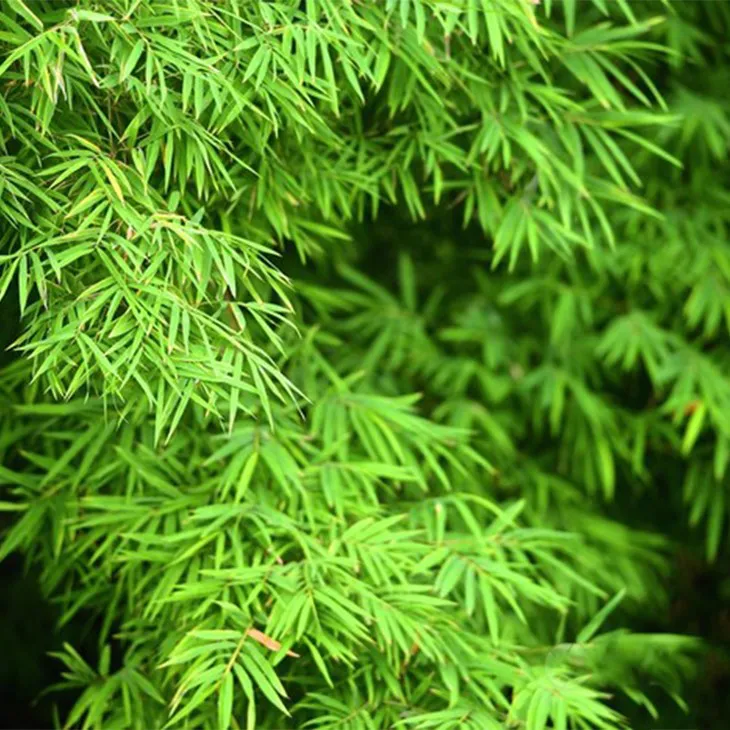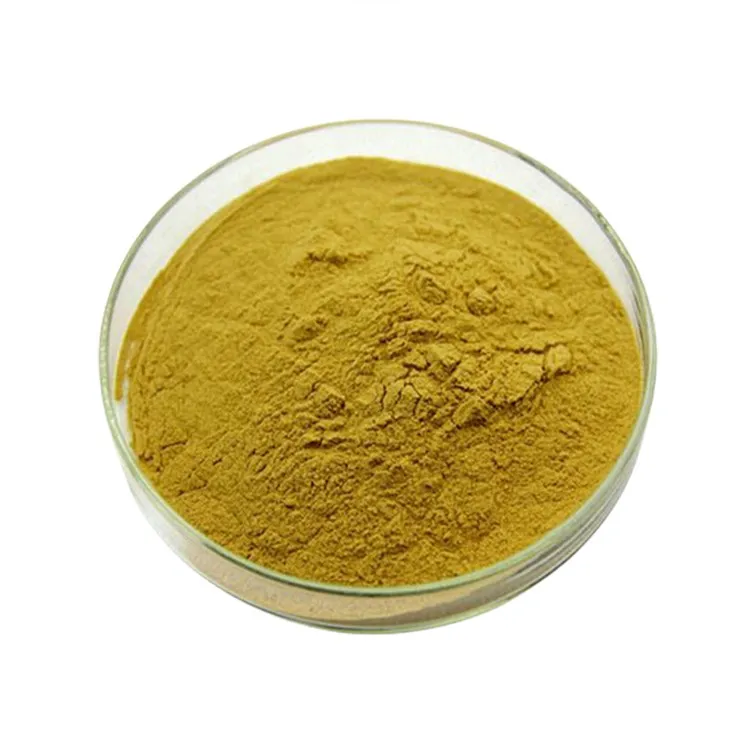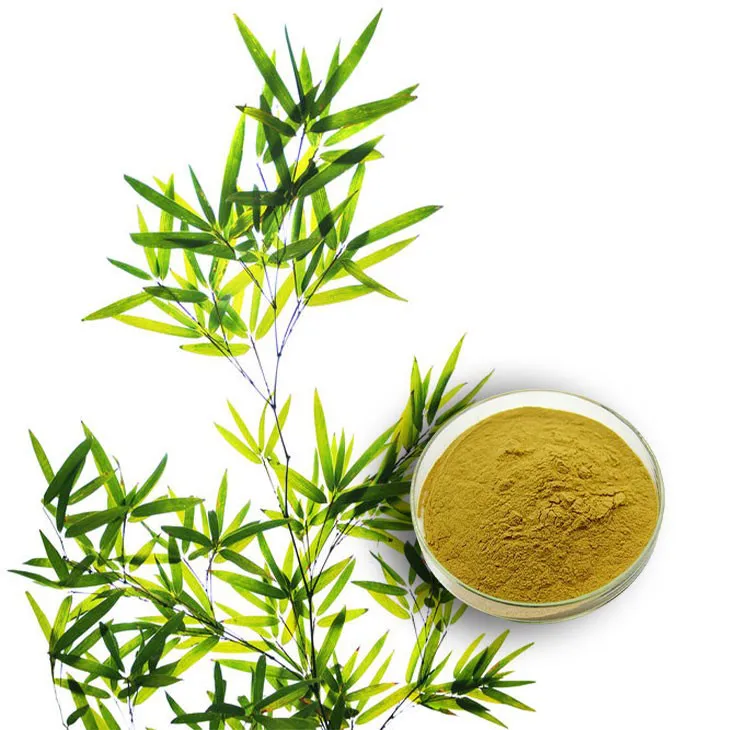- 0086-571-85302990
- sales@greenskybio.com
Supercritical Carbon Dioxide Extraction of Bamboo Leaf Extracts
2024-11-28

1. Introduction
Bamboo is a highly abundant and versatile plant resource. Bamboo leaves, in particular, are rich in a variety of valuable components. The extraction of these components from bamboo leaves has attracted significant attention in recent years. Among the various extraction methods available, supercritical carbon dioxide extraction has emerged as a very promising technique.
Supercritical carbon dioxide extraction is based on the unique properties of carbon dioxide when it is in its supercritical state. This state occurs when carbon dioxide is subjected to specific pressure and temperature conditions above its critical point. Under these conditions, carbon dioxide exhibits properties that are intermediate between those of a gas and a liquid, making it an excellent solvent for extracting bioactive substances from natural sources such as bamboo leaves.

2. The Value of Bamboo Leaf Components
Bamboo leaves contain a diverse range of compounds with significant potential value.
2.1. Flavonoids
Flavonoids are one of the major groups of bioactive compounds found in bamboo leaves. These compounds are known for their antioxidant properties. They can help in neutralizing free radicals in the body, which are associated with various diseases and aging processes. Flavonoids also have anti - inflammatory effects, which can be beneficial in reducing inflammation in the body.
2.2. Phenolic Compounds
Phenolic compounds present in bamboo leaves also contribute to their antioxidant activity. They can protect cells from oxidative damage and have potential applications in the fields of food preservation and cosmetics. These compounds can also interact with other components in the body, such as enzymes and receptors, and may play a role in regulating various physiological processes.
2.3. Amino Acids
Bamboo leaves contain certain amino acids that are essential for human health. These amino acids can be used as building blocks for proteins in the body. They are involved in various metabolic processes, such as muscle growth, repair of tissues, and the synthesis of hormones and neurotransmitters.

3. Supercritical Carbon Dioxide Extraction: Principles and Process
3.1. Principles
When carbon dioxide is in its supercritical state, it has a high density similar to that of a liquid, which allows it to dissolve substances like the components in bamboo leaves. At the same time, it has a low viscosity and high diffusivity like a gas, which enables it to penetrate easily into the matrix of the bamboo leaves. The solubility of different components in supercritical carbon dioxide can be adjusted by varying the pressure and temperature conditions. This selectivity is one of the major advantages of supercritical carbon dioxide extraction.
3.2. Process
The supercritical carbon dioxide extraction process typically involves the following steps:
- Pre - treatment of bamboo leaves: The bamboo leaves are first cleaned and dried to remove any impurities and moisture. This step is crucial to ensure the quality of the final extract.
- Loading into the extraction vessel: The pre - treated bamboo leaves are placed into the extraction vessel. The vessel is then sealed to prevent any leakage of carbon dioxide.
- Introduction of carbon dioxide: Carbon dioxide is introduced into the extraction vessel and is pressurized and heated to reach its supercritical state. The pressure and temperature are carefully controlled according to the requirements of the extraction.
- Extraction: The supercritical carbon dioxide then extracts the bioactive substances from the bamboo leaves. The extraction time is also an important factor that affects the yield and quality of the extract.
- Separation: After the extraction, the supercritical carbon dioxide containing the dissolved components is transferred to a separation vessel. By reducing the pressure or changing the temperature, the carbon dioxide reverts to a gaseous state, and the extracted components are separated from the carbon dioxide.
- Collection of the extract: The separated extract is then collected for further analysis, purification, or use in various applications.

4. Advantages of Supercritical Carbon Dioxide Extraction over Conventional Methods
4.1. Environment - friendly
One of the most significant advantages of supercritical carbon dioxide extraction is its environmental friendliness. In contrast to traditional extraction methods that often use organic solvents such as hexane or ethanol, supercritical carbon dioxide extraction does not require the use of these harmful solvents. This not only reduces the environmental pollution caused by solvent emissions but also eliminates the risk of solvent residues in the final product, which is of great importance for applications in the food, pharmaceutical, and cosmetic industries.
4.2. Selectivity
Supercritical carbon dioxide extraction offers high selectivity for different components in bamboo leaves. By adjusting the pressure and temperature conditions, it is possible to preferentially extract specific bioactive substances while leaving behind other unwanted components. This selectivity can result in a more pure and concentrated extract, which may have enhanced biological activity and better quality.
4.3. Mild Conditions
The extraction conditions in supercritical carbon dioxide extraction are relatively mild compared to some other extraction methods. The relatively low temperature used in this process helps to preserve the integrity of the bioactive components in bamboo leaves. This is especially important for heat - sensitive compounds, such as certain flavonoids and amino acids, which may be degraded or denatured under harsher extraction conditions.

5. Quality of the Extracts Obtained by Supercritical Carbon Dioxide Extraction
5.1. Chemical Composition
The extracts obtained by supercritical carbon dioxide extraction have a distinct chemical composition compared to those obtained by conventional methods. Due to the selectivity of the supercritical carbon dioxide extraction, the extracts are often enriched in the desired bioactive components. For example, the concentration of flavonoids and phenolic compounds may be higher in the supercritical carbon dioxide - extracted Bamboo Leaf extracts. This can lead to a more potent antioxidant and anti - inflammatory effect of the extract.
5.2. Biological Activity
The biological activity of the supercritical carbon dioxide - extracted Bamboo Leaf extracts has also been found to be superior in many cases. In vitro and in vivo studies have shown that these extracts can exhibit stronger antioxidant, anti - inflammatory, and antimicrobial activities. This enhanced biological activity can be attributed to the higher purity and integrity of the bioactive components in the extracts, as well as the absence of solvent residues that may interfere with the biological activity.
6. Applications of Bamboo Leaf extracts
6.1. Food Industry
Bamboo leaf extracts can be used as natural food additives in the food industry. Their antioxidant properties can be utilized to extend the shelf life of food products, such as oils, fats, and baked goods. They can also be added to functional foods as a source of bioactive compounds, providing health - promoting benefits to consumers.
6.2. Pharmaceutical Industry
In the pharmaceutical industry, bamboo leaf extracts may have potential applications in the development of new drugs or nutraceuticals. The bioactive components in the extracts, such as flavonoids and amino acids, may have pharmacological activities that can be exploited for the treatment of various diseases, including chronic inflammation, oxidative stress - related disorders, and certain metabolic diseases.
6.3. Cosmetic Industry
The antioxidant and anti - inflammatory properties of bamboo leaf extracts make them suitable for use in the cosmetic industry. They can be incorporated into skincare products, such as creams, lotions, and serums, to protect the skin from oxidative damage, reduce inflammation, and improve skin health. The natural origin of the extracts also makes them an attractive alternative to synthetic ingredients in cosmetics.
7. Challenges and Future Directions
7.1. Challenges
Despite the many advantages of supercritical carbon dioxide extraction of bamboo leaf extracts, there are still some challenges that need to be addressed. One of the main challenges is the relatively high cost of the equipment required for supercritical carbon dioxide extraction. The high - pressure and high - temperature conditions involved in the process require specialized and expensive equipment, which may limit the widespread application of this method, especially in small - scale industries.
Another challenge is the optimization of the extraction process. Although the selectivity of supercritical carbon dioxide extraction can be adjusted by varying the pressure and temperature, finding the optimal conditions for maximum yield and quality of the extract still requires further research. Different types of bamboo leaves may have different component profiles, and therefore, the extraction conditions may need to be customized for each type of bamboo leaf.
7.2. Future Directions
In the future, research efforts should focus on developing more cost - effective equipment for supercritical carbon dioxide extraction. This could involve the design of new extraction systems that can operate at lower pressures or temperatures without sacrificing the extraction efficiency. Additionally, further studies are needed to fully understand the relationship between the extraction conditions and the quality and biological activity of the extracts.
There is also a need for more in - depth research on the biological activities of bamboo leaf extracts. This could lead to the discovery of new pharmacological properties and applications of these extracts. Moreover, exploring new ways to incorporate bamboo leaf extracts into various products, such as biodegradable plastics or textile fibers, could expand the utilization of bamboo resources and contribute to the development of more sustainable products.
FAQ:
What are the valuable components in bamboo leaves?
Bamboo leaves contain a variety of valuable components such as flavonoids, phenolic acids, and polysaccharides. These components have antioxidant, anti - inflammatory, and other biological activities.
How does supercritical CO₂ extraction work?
Supercritical CO₂ extraction works by operating at a pressure and temperature above the critical point of CO₂. At this supercritical state, CO₂ has properties between a gas and a liquid, which allows it to penetrate the bamboo leaves and selectively dissolve and extract the bioactive substances.
What are the advantages of supercritical CO₂ extraction over traditional extraction methods?
Supercritical CO₂ extraction has several advantages over traditional methods. It can avoid the use of harmful solvents, which reduces environmental pollution and the risk of product contamination. Also, the extracts obtained usually have better quality in terms of chemical composition and biological activity.
What factors can affect the supercritical CO₂ extraction of bamboo leaf extracts?
Factors such as extraction pressure, temperature, extraction time, and the flow rate of CO₂ can affect the supercritical CO₂ extraction of bamboo leaf extracts. These factors need to be optimized to obtain high - quality extracts.
What are the potential applications of bamboo leaf extracts obtained by supercritical CO₂ extraction?
The bamboo leaf extracts obtained by supercritical CO₂ extraction can be potentially used in the food, pharmaceutical, and cosmetic industries. For example, in the food industry, they can be used as natural antioxidants; in the pharmaceutical industry, they may have potential therapeutic effects; and in the cosmetic industry, they can be used for skin care products due to their antioxidant and anti - inflammatory properties.
Related literature
- Supercritical Fluid Extraction of Bioactive Compounds from Bamboo Leaves: A Review"
- "Optimization of Supercritical Carbon Dioxide Extraction of Bamboo Leaf Flavonoids"
- "Green Extraction of Bamboo Leaf Extracts using Supercritical CO₂: Process and Product Quality"
- ▶ Hesperidin
- ▶ citrus bioflavonoids
- ▶ plant extract
- ▶ lycopene
- ▶ Diosmin
- ▶ Grape seed extract
- ▶ Sea buckthorn Juice Powder
- ▶ Beetroot powder
- ▶ Hops Extract
- ▶ Artichoke Extract
- ▶ Reishi mushroom extract
- ▶ Astaxanthin
- ▶ Green Tea Extract
- ▶ Curcumin Extract
- ▶ Horse Chestnut Extract
- ▶ Other Problems
- ▶ Boswellia Serrata Extract
- ▶ Resveratrol Extract
- ▶ Marigold Extract
- ▶ Grape Leaf Extract
- ▶ blog3
- ▶ blog4
-
The best honeysuckle pollen on the market.
2024-11-28
-
The Best Rosemary Extract in 2024.
2024-11-28
-
The best - quality feverfew extract.
2024-11-28
-
The best organic aged garlic extract.
2024-11-28
-
Konjac flour manufacturers from China.
2024-11-28
-
Certified organic comfrey extract.
2024-11-28
-
The best sophora japonica extract in 2024.
2024-11-28
-
Panax Ginseng Leaf Extract
2024-11-28
-
Tinospora cordifolia extract
2024-11-28
-
Maca Extract
2024-11-28
-
Artichoke Extract
2024-11-28
-
Dandelion Leaf Extract
2024-11-28
-
Black Pepper Extract
2024-11-28
-
Bayberry Extract
2024-11-28
-
American Ginseng Root Extract
2024-11-28
-
Tamarind extract powder
2024-11-28
-
Diosmin
2024-11-28





















